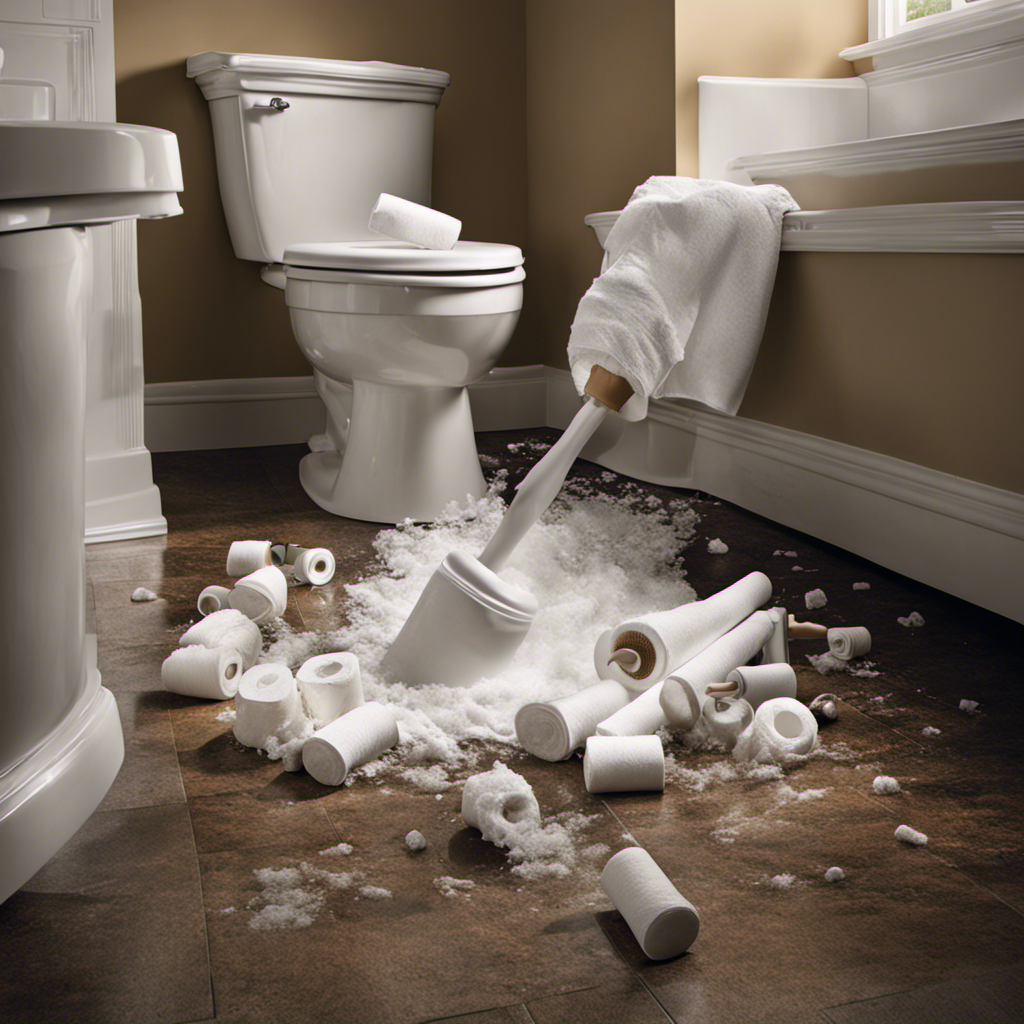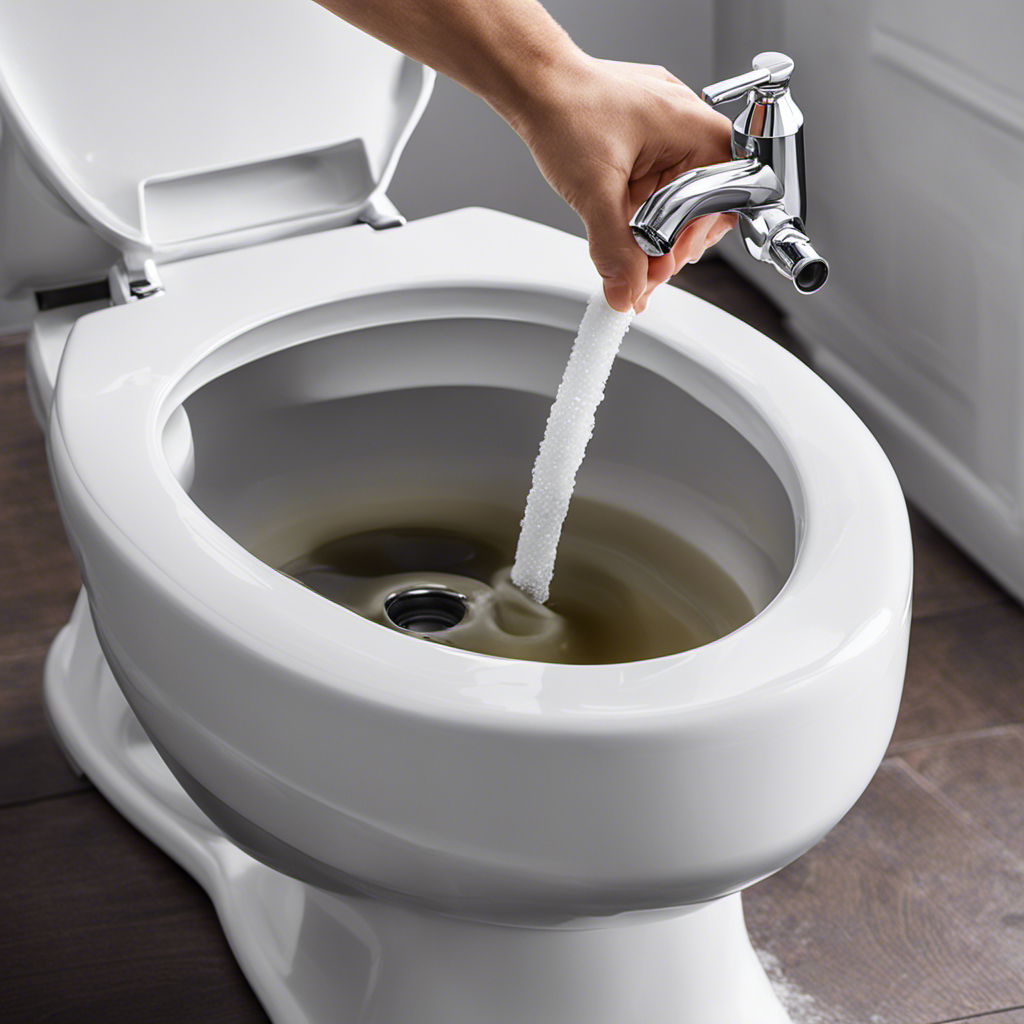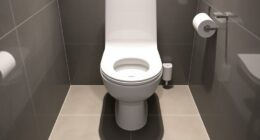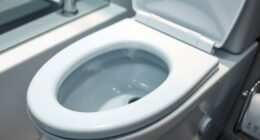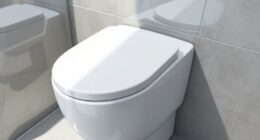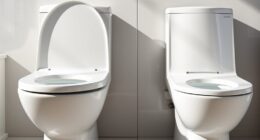I’ve been there – the sudden dread as you flush the toilet and the water rises instead of going down. Is it just a minor hiccup or a full-blown clog? Don’t worry, I’ve got you covered.
In this guide, I’ll walk you through the signs of a clogged toilet, the common causes, and how to identify whether it’s partially or fully clogged. With these expert tips, you’ll be able to quickly determine if your toilet needs some TLC or a plumber’s help.
Key Takeaways
- Water overflowing from the toilet bowl is a sign of a clogged toilet and prompt action is necessary to avoid further damage.
- Excessive toilet paper usage and flushing non-flushable items are common causes of toilet clogs.
- Regular cleaning, proper maintenance, and avoiding flushing non-flushable items can help prevent clogs.
- Identifying signs of a partially clogged toilet, such as poor flushing performance and gurgling sounds, can help prevent a fully clogged toilet.
Signs of a Clogged Toilet
If there’s water overflowing from the toilet bowl, it’s a clear sign that the toilet is clogged. Clogs can occur due to various reasons such as excessive toilet paper or foreign objects being flushed down.
When faced with a clogged toilet, it is important to act promptly to avoid further damage. Plunging techniques can often be effective in dislodging the blockage. Begin by placing the plunger over the drain hole and applying downward pressure, followed by a quick, forceful upward motion. Repeat this motion several times until the water starts draining properly.
However, if the clog persists despite your efforts, it may be necessary to seek professional help. Plumbers have the expertise and tools to tackle stubborn clogs and ensure your toilet is back to its normal functioning state.
Common Causes of Toilet Clogs
When it comes to toilet clogs, there are a few common culprits that can wreak havoc on your plumbing system.
One of the main offenders is excessive toilet paper usage, as it can easily accumulate and block the pipes.
Additionally, flushing items such as sanitary products, wipes, or even small toys can also lead to clogs.
To prevent these issues, it is crucial to practice proper maintenance by regularly cleaning your toilet and avoiding the disposal of non-flushable items.
Common Culprits of Clogs
The most common culprits of clogs are toilet paper and foreign objects. When it comes to toilet unclogging methods and DIY toilet repairs, it’s crucial to identify the cause of the clog. Here are the top three items that often lead to toilet blockages:
-
Excessive toilet paper usage: Using too much toilet paper at once can overwhelm the toilet’s drainage system, causing a clog.
-
Flushing foreign objects: Flushing items like cotton balls, sanitary products, or baby wipes can easily lead to a clogged toilet.
-
Build-up of waste and debris: Over time, waste and debris can accumulate in the pipes, narrowing the passage and resulting in a clog.
To prevent clogs, it’s essential to use toilet paper in moderation, avoid flushing foreign objects, and regularly clean the toilet to prevent waste build-up. If a clog does occur, try using a plunger or a toilet auger for DIY toilet repairs before considering professional help.
Prevention and Maintenance Tips
To prevent clogs, remember to regularly clean your toilet and use toilet paper in moderation. Proper toilet maintenance is crucial for preventing clogs and ensuring the efficient functioning of your plumbing system.
Firstly, regular cleaning of your toilet bowl and drain pipes can help to prevent the buildup of debris and residue that can lead to clogs. Use a toilet brush and a mild cleaning solution to scrub the bowl and remove any accumulated grime.
Additionally, using toilet paper in moderation can help to prevent excessive buildup in the pipes. Remember to use only a reasonable amount of toilet paper and avoid flushing items such as wipes, sanitary products, or excessive amounts of tissue.
By following these maintenance tips, you can reduce the risk of clogs and keep your toilet running smoothly.
Now let’s move on to how to identify a partially clogged toilet.
How to Identify a Partially Clogged Toilet
You can easily tell if your toilet is partially clogged by observing the water level after flushing. Here are three signs to look for:
-
Water level rises and then slowly goes back down: If you notice that the water level in your toilet bowl rises higher than normal after flushing and then slowly goes back down, it is a sign of a partial clog. The obstruction allows some water to pass through, but not enough to fully clear the bowl.
-
Poor flushing performance: Another indication of a partially clogged toilet is poor flushing performance. If you find that the water doesn’t flow forcefully or efficiently when you flush, it could be due to a partial blockage in the pipes.
-
Gurgling sounds: Lastly, if you hear gurgling sounds coming from your toilet after flushing, it could be a sign of a partial clog. The trapped air bubbles caused by the obstruction can create these noises.
Identifying these signs will help you take the necessary steps to prevent a fully clogged toilet.
Steps to Determine if Your Toilet Is Clogged
Start by checking for any signs of water rising and slowly going back down after you flush. This could indicate a clogged toilet. To further troubleshoot the issue, you can follow these steps:
| Step | Description |
|---|---|
| 1 | Use a plunger to try and dislodge the clog. Make sure to create a seal around the drain hole and push and pull vigorously. |
| 2 | If plunging doesn’t work, try using a toilet auger. Insert the auger into the toilet and crank it clockwise while applying downward pressure. |
| 3 | If the clog persists, it may be necessary to remove the toilet and inspect the drain pipe for any obstructions. This should be done by a professional plumber. |
Testing for a Full Clog in Your Toilet
After checking for signs of water rising and going back down, the next step is to attempt to dislodge the clog using a plunger. Here’s how you can test for a full clog in your toilet:
- Position the plunger over the drain hole, making sure it covers the entire opening.
- Apply downward pressure and create a tight seal between the plunger and the toilet bowl.
- Use a rapid up-and-down motion to create suction and dislodge the clog.
By following these steps, you can determine if your toilet is fully clogged.
However, it’s important to note that prevention is key to avoiding toilet blockages. To prevent a partially clogged toilet, be mindful of what you flush, avoid excessive toilet paper usage, and consider using a toilet bowl cleaner regularly to keep the pipes clear and prevent build-up.
Indications of a Serious Toilet Blockage
To determine the severity of a toilet blockage, pay attention to signs such as water backing up into the sink or bathtub. These symptoms indicate that the clog is serious and requires immediate attention. However, there are other indications that can help you assess the severity of the blockage. Here is a table that summarizes the common symptoms and their possible causes:
| Symptom | Possible Cause |
|---|---|
| Water rising in the bowl | Partial clog or blocked vent |
| Slow drainage | Partial clog or narrow pipes |
| Gurgling sounds | Air trapped in the pipes |
If you are experiencing any of these symptoms, it is crucial to take action promptly to prevent further damage. Understanding the severity of the blockage can also help you determine the best method to fix a clogged toilet.
Conclusion
In conclusion, it is clear that knowing how to determine if your toilet is clogged is essential for proper maintenance. By being knowledgeable about the indications of a serious toilet blockage, you can take prompt action to prevent any further damage. Remember to test for a full clog and be observant of any unusual behaviors or sounds.
With this precise and technical knowledge, you can ensure a smoothly running toilet and avoid any messy situations.





